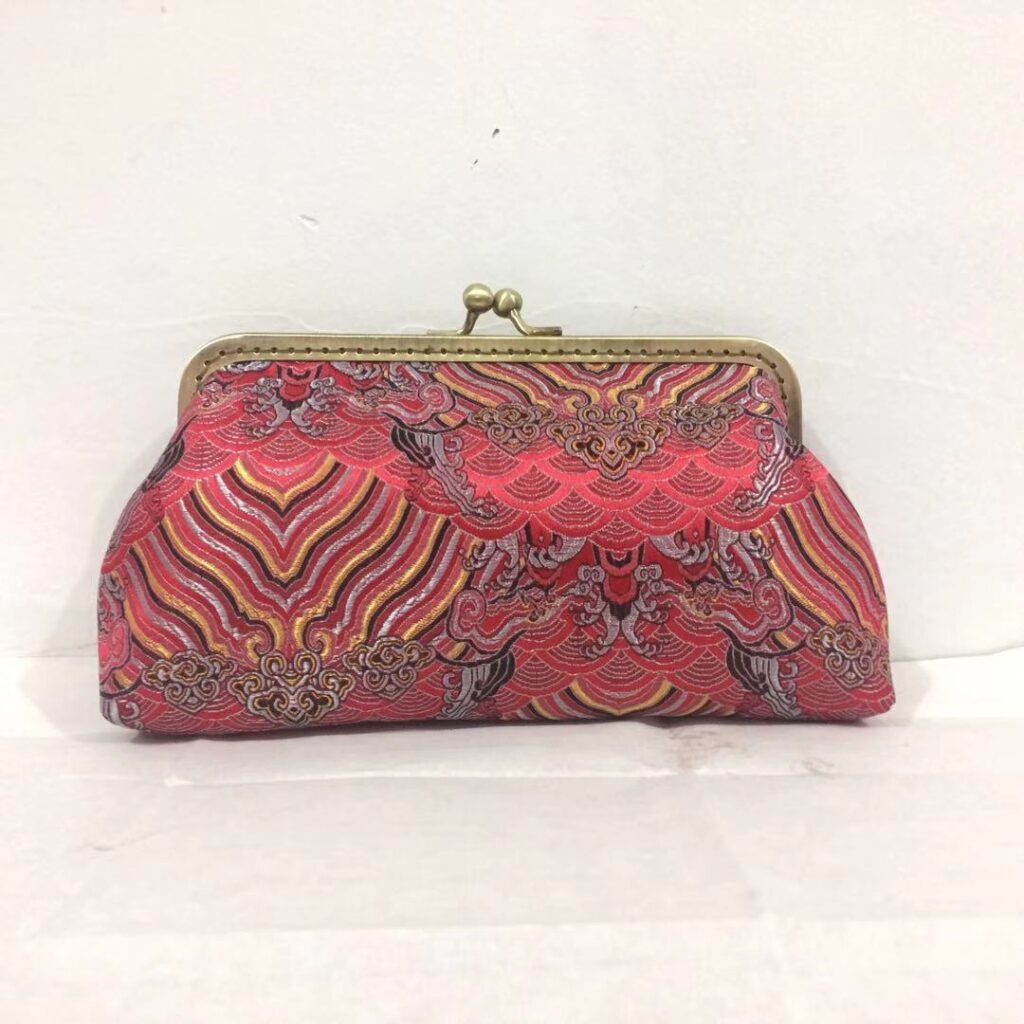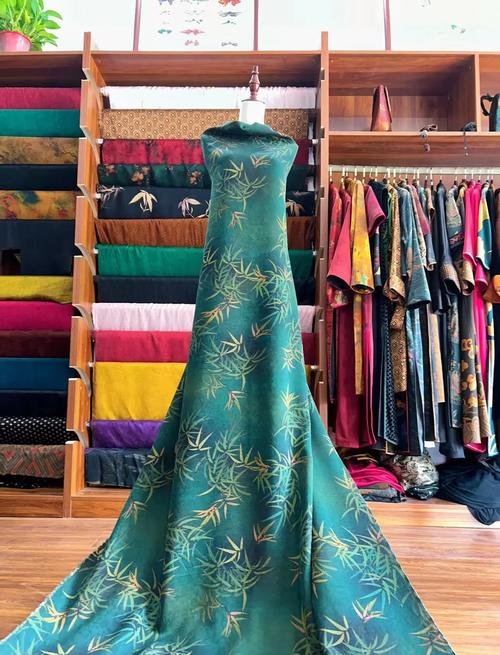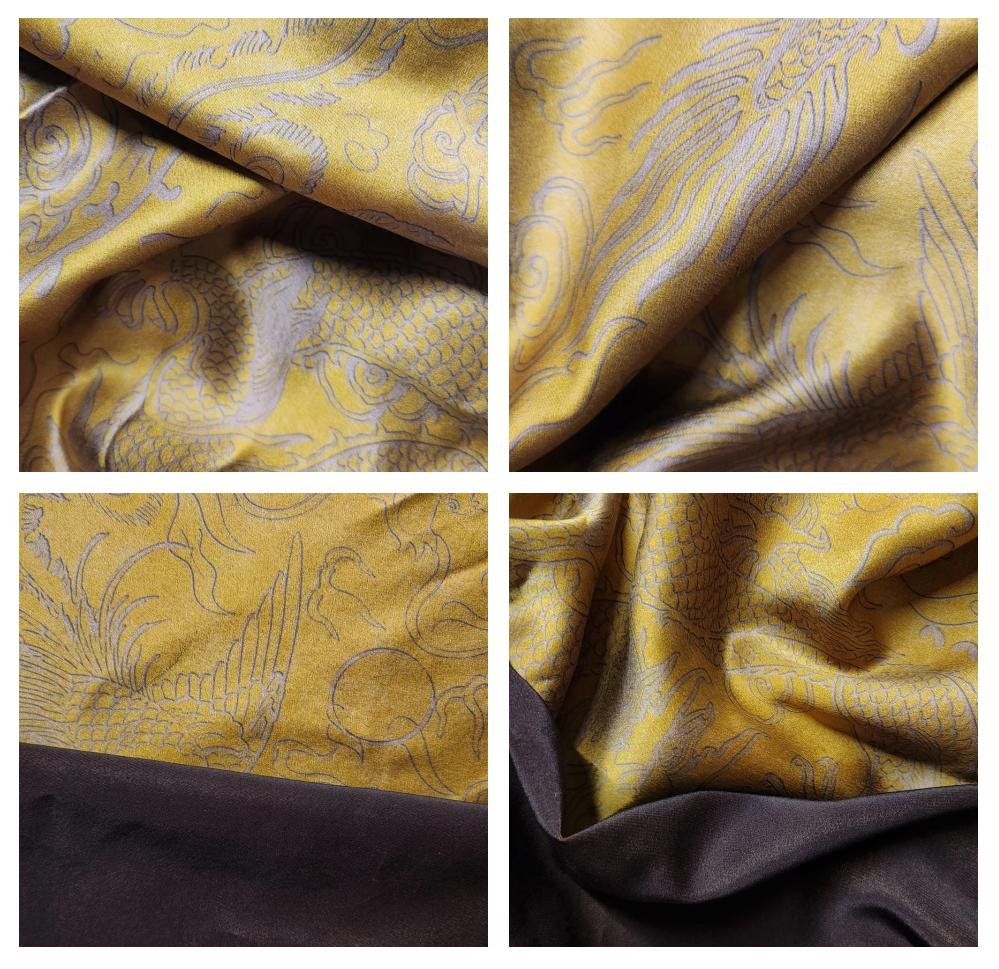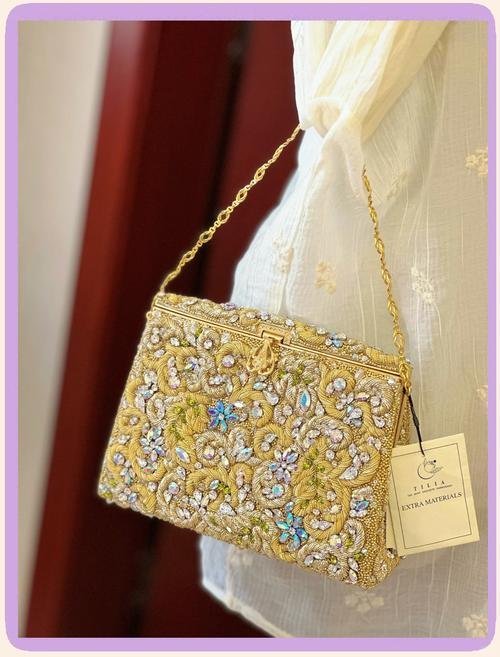
In the world of luxury, packaging isn’t just a protective shell—it’s a vital part of the storytelling. From couture perfume boxes to handcrafted jewelry pouches, the fabric lining inside speaks volumes before the product is even touched. And when that lining is silk, the message is unmistakable: elegance, authenticity, and prestige. Silk elevates luxury packaging by adding visual richness, tactile appeal, and a perception of exclusivity. Its production methods—such as hand weaving, eco-dyeing, and fiber quality—directly influence how a brand is perceived by high-end customers, making silk a strategic asset in luxury presentation.
But not all silk is created equal. The way it’s produced—right down to how the cocoon is harvested or the yarn is twisted—can transform a brand’s unboxing moment from ordinary to unforgettable. Let’s explore how silk in luxury packaging isn’t just a material choice, but a brand elevation strategy.
What Makes Silk a Preferred Material in Luxury Packaging?

Silk is favored in luxury packaging for its natural sheen, premium texture, and association with exclusivity. It engages the senses—sight, touch, and even sound—creating a multisensory brand experience that reinforces value and quality.
Why Brands Choose Silk Over Other Fabrics
1. Sensory Branding
- Visual Impact: Silk’s natural luster enhances light reflection, giving packaging a glowing finish.
- Tactile Experience: Smooth, cool, and flowing—silk’s touch conveys softness and indulgence.
- Sound Perception: The gentle rustle of silk can trigger subconscious perceptions of refinement.
A study by Luxury Packaging Weekly (2023) found that consumers rated silk-lined boxes 32% more “memorable” and 26% more “trustworthy” than those lined with polyester or paper.
2. Cultural Symbolism
- In Asian and European heritage, silk has long been a symbol of nobility, purity, and celebration.
- Silk packaging is often used in:
- Premium cosmetics and perfumes
- Fine jewelry and watches
- Heritage spirits and gift sets
- Custom wedding and ceremonial boxes
3. Market Differentiation
| Material | Visual Appeal | Tactile Quality | Luxury Perception | Biodegradable |
|---|---|---|---|---|
| Silk | ★★★★★ | ★★★★★ | ★★★★★ | Yes |
| Satin (poly) | ★★★★☆ | ★★★☆☆ | ★★☆☆☆ | No |
| Cotton | ★★☆☆☆ | ★★☆☆☆ | ★☆☆☆☆ | Yes |
| Velvet | ★★★★☆ | ★★★★☆ | ★★★☆☆ | Partially |
A French champagne house increased its gift set pre-orders by 19% after switching from cardboard inlays to natural-dyed silk pouches with logo embroidery.
How Do Different Types of Silk Affect the Look and Feel of Packaging?

The type of silk used—Mulberry, Eri, Tasar, or Muga—affects not only texture and appearance but also the sustainability story and cultural resonance of luxury packaging. Each silk offers distinct tactile and visual profiles that influence unboxing impressions.
Silk Types and Their Aesthetic/Functional Differences
1. Mulberry Silk – Glossy, Smooth, Timeless
- Most common in luxury fashion and gift packaging.
- Extremely fine filament, giving it unmatched shine and softness.
- Often used in high-end custom box linings and drawstring pouches.
| Attribute | Mulberry Silk |
|---|---|
| Sheen | High |
| Texture | Ultra-smooth |
| Color Range | Dyeable to precise hues |
| Cost Range (USD/m²) | \$8–\$20 |
2. Eri Silk – Soft, Matte, Sustainable
- Known as “peace silk,” as the silkworm isn’t killed during cocoon harvesting.
- Feels cottony, breathable, and eco-authentic.
- Preferred for vegan or ethical luxury brands.
| Attribute | Eri Silk |
|---|---|
| Sheen | Low to medium |
| Texture | Dense, soft |
| Sustainability | High |
| Target Branding | Eco-luxury, artisan goods |
3. Tasar Silk – Rustic, Textured, Artisanal
- Wild silk with coarser threads and golden tones.
- Used in heritage packaging, handloom inserts, and handmade products.
- Strong story appeal for B2B buyers targeting authentic craftsmanship.
4. Muga Silk – Golden, Rare, Premium
- Produced only in Assam, India; natural golden sheen, no dye needed.
- Ultra-exclusive, best for VIP or heritage presentation boxes.
A Japanese perfumery launched a limited-edition line using handwoven Tasar silk boxes and saw a 400% ROI on packaging differentiation alone—driven by storytelling around wild silk heritage.
Which Silk Production Methods Add the Most Perceived Value to High-End Brands?

Silk production methods such as hand-reeling, eco-dyeing, and low-temperature sericin preservation significantly increase the perceived value of silk in luxury packaging. These techniques enhance the fabric’s visual quality, texture, ethical appeal, and overall story—key components of brand elevation.
Linking Craftsmanship with Brand Impact
1. Hand-Reeled vs. Machine-Reeled Silk
- Hand-reeling results in longer, more intact filaments, producing a richer and more consistent sheen.
- Machine-reeling is efficient but may introduce tension marks or inconsistent texture.
| Method | Output Quality | Brand Storytelling | Production Speed |
|---|---|---|---|
| Hand-Reeled | ★★★★★ | Excellent | Slower |
| Machine-Reeled | ★★★★☆ | Moderate | Faster |
High-end European packaging firms often pay a 15–30% premium for hand-reeled silk due to its superior drape and deeper glow—especially when used in jewelry boxes or fragrance displays.
2. Sericin-Retaining Processes
- Sericin, the silk gum, adds a natural stiffness and matte richness that premium brands prefer.
- Low-temperature processing retains sericin, making silk better suited for packaging with structure (e.g., rigid box linings, pouches that hold shape).
A Swiss watchmaker reported improved tactile feedback and a more “artisan feel” after switching to sericin-preserved silk inserts, leading to a 23% higher packaging satisfaction score in post-purchase surveys.
3. Eco-Dyeing and Botanical Printing
- Eco-dyeing with natural pigments (e.g., indigo, turmeric, madder root) enhances brand storytelling and appeals to sustainability-focused buyers.
- Botanical silk printing—where leaves and flowers are steamed into the silk—creates unique, non-repeatable designs ideal for limited-edition luxury sets.
| Technique | Aesthetic Impact | Eco Score | Ideal Use Case |
|---|---|---|---|
| Natural Dyeing | Subtle, rich | ★★★★★ | Vegan or organic luxury collections |
| Botanical Printing | One-of-a-kind | ★★★★☆ | Wedding boxes, bespoke perfume packaging |
| Reactive Dyeing | Vibrant, durable | ★★★☆☆ | Commercial luxury branding |
Is Handwoven or Machine-Woven Silk Better for Premium Packaging Applications?

Handwoven silk offers authenticity, uniqueness, and artisanal appeal, making it ideal for premium, low-volume luxury packaging. Machine-woven silk ensures consistency, scalability, and cost-efficiency—suitable for large-scale luxury product lines. The best choice depends on your brand’s positioning and volume.
Weaving Method as a Brand Signal
1. Handwoven Silk – Craftsmanship First
- Each yard of handwoven silk is slightly different, telling a story of tradition and artistry.
- Used in bespoke packaging, limited-edition lines, heritage brand activations.
| Characteristic | Handwoven Silk |
|---|---|
| Texture | Naturally varied, rich |
| Consistency | Medium |
| Custom Patterning | High (can include regional motifs) |
| MOQ Flexibility | Very flexible (even 10–20 units) |
An Indian tea brand used handwoven Assam silk in its export packaging for a \$500 collector’s set, leading to a successful limited-run launch in Harrods and KaDeWe.
2. Machine-Woven Silk – Efficiency + Uniformity
- Offers smooth, repeatable patterns ideal for global brand consistency.
- Available in many finishes (satin, jacquard, crepe), making it highly versatile.
| Characteristic | Machine-Woven Silk |
|---|---|
| Texture | Smooth, uniform |
| Production Speed | High |
| Pattern Repeatability | Excellent |
| MOQ Requirement | Medium to high (250–500 m²) |
3. When to Combine Both
- Use machine-woven linings for volume SKUs and handwoven wraps or bags for elite editions.
- This hybrid approach reduces cost while still signaling luxury.
Insight: At SzoneierFabrics, many clients pair machine-woven satin interiors with hand-dyed Eri silk pouches—giving both scalable luxury and bespoke craftsmanship in one SKU.
How Does the Dyeing and Finishing of Silk Influence Brand Perception?

The dyeing and finishing techniques used on silk play a critical role in shaping a customer’s perception of a luxury brand. Rich color saturation, tactile softness, and sheen intensity can all signal premium quality or cheapen the experience—depending entirely on how the silk is treated.
From Color Chemistry to Emotional Appeal
1. Color Psychology and Silk in Packaging
- Deep jewel tones (emerald, ruby, sapphire) suggest heritage and wealth.
- Pastels and neutrals indicate refinement, modernity, and quiet luxury.
- Metallic sheens (achieved through calendaring) reflect prestige and opulence.
A luxury skincare brand in South Korea reported that customers perceived a 15% higher product value when the box liner was colored in navy silk with matte gold stamping—compared to the same packaging in white cotton.
2. Dyeing Methods and Their Effects
| Dyeing Technique | Appearance | Environmental Impact | Brand Application |
|---|---|---|---|
| Reactive Dyeing | Bright, fade-resistant | Moderate | High-volume luxury |
| Natural Dyeing | Earthy, organic, story-rich | Low | Artisan & sustainable luxury |
| Acid Dyeing | Sharp tones, fast absorption | Moderate–High | Fashion & accessory packaging |
| Botanical Printing | Unique prints from actual plants | Low | Handmade, limited edition sets |
3. Finishing Processes
- Softening: Enhances the drape and hand-feel of inner linings or pouches.
- Calendering: Flattens and adds gloss, perfect for satin-style finishes.
- Embossing/Heat Pressing: Allows for logo impressions on the silk surface—subtle yet powerful branding.
- Anti-static & wrinkle-resistant treatments: Helpful for shipping stability and neat presentation.
A Danish chocolatier used soft-finished burgundy Mulberry silk as an inner wrap in its holiday collection, creating such a distinct tactile feel that 35% of customers said they kept the silk as a keepsake—turning packaging into an extension of the product.
What Role Does Sustainable Silk Production Play in Luxury Packaging?

Sustainable silk production adds brand credibility, appeals to conscious consumers, and supports ESG goals. Using Eri or organic Mulberry silk, natural dyes, and eco-friendly finishing helps luxury brands differentiate with authentic sustainability claims.
Eco-Luxury in Action
1. Types of Sustainable Silk
- Eri Silk: Harvested after moth emergence; cruelty-free and biodegradable.
- Organic Mulberry Silk: From pesticide-free farms with traceable sericulture.
- Recycled Silk Waste: Spun from short or defective fibers for a circular story.
| Sustainability Factor | Eri Silk | Organic Mulberry | Regular Mulberry |
|---|---|---|---|
| Animal-Friendly | ★★★★★ | ★★★★☆ | ★☆☆☆☆ |
| Biodegradability | ★★★★★ | ★★★★★ | ★★★★★ |
| CO₂ Emissions (estimated) | Low | Medium | High |
| Price per m² (USD) | \$6–12 | \$8–18 | \$6–16 |
2. Certifications That Matter
| Certification | What It Proves |
|---|---|
| GOTS | Organic fiber compliance |
| OEKO-TEX | No harmful chemicals in processing |
| ISO 14001 | Environmental management system |
| Silk Mark (India) | Authentic, government-certified silk |
3. Consumer Impact
- 68% of Gen Z and Millennial luxury buyers say sustainability influences purchasing decisions (Bain & Co., 2023).
- Packaging with visible sustainability features (QR codes, ethical sourcing tags, eco-dyes) increases post-unboxing brand recall by 2.4x.
A vegan cosmetics company collaborated with SzoneierFabrics to develop GOTS-certified, naturally dyed Eri silk pouches. They promoted it as “conscious luxury,” and product reviews frequently mentioned the eco-silk packaging as a brand highlight.
Do Certifications and Quality Grades Matter When Sourcing Silk for Packaging?

Yes, certifications and silk quality grades are essential for luxury packaging buyers to ensure authenticity, safety, consistency, and storytelling value. Certifications verify ethical production and chemical safety, while grading reflects the silk’s texture, sheen, and durability.
How Trust and Quality Are Measured in the Silk Supply Chain
1. Silk Grading Standards
| Grade | Description | Best Use Case |
|---|---|---|
| Grade 6A | Highest quality, extremely fine and consistent | Premium box linings, jewelry wraps |
| Grade 5A | Excellent quality with minimal imperfections | Fragrance pouches, apparel boxes |
| Grade 4A | Moderate quality, slightly uneven in filament | General gift packaging |
Grading is based on:
- Filament length
- Uniformity
- Tensile strength
- Defect presence (slubs, knots, discoloration)
If you’re building an ultra-luxury line (e.g., limited-edition watches or collector perfumes), only Grade 6A or 5A silk will deliver the consistency and finish high-end clients expect.
2. Certifications for Quality & Compliance
| Certification | Benefit |
|---|---|
| OEKO-TEX Standard 100 | Verifies no harmful substances used in dyeing |
| GOTS | Certifies organic farming and processing |
| Silk Mark (India) | Government-issued silk authenticity seal |
| ISO 9001 | Factory-level quality management certification |
| SA8000 | Social compliance (fair labor) |
3. How Certifications Support Brand Storytelling
- Communicate ethics and transparency in your unboxing narrative.
- Use certification labels inside packaging or on QR tags.
- Increase appeal to both eco-conscious and premium buyers.
An Australian wine brand introduced a collector’s box lined with GOTS-certified Eri silk, including a hangtag explaining the silk’s cruelty-free origin. The campaign increased their luxury sales by 40% and helped them enter the Asian wedding gift market.
How Can B2B Buyers Customize Silk Fabric for Exclusive Packaging Solutions?
B2B buyers can customize silk for packaging by specifying weave, GSM, dyeing technique, pattern, certification needs, and branding features such as embroidered logos or foil printing. Partnering with an experienced silk manufacturer like SzoneierFabrics ensures tailored solutions from concept to shipment.
A Step-by-Step Approach to Custom Silk Packaging
1. Key Customization Options
| Customization Area | Options Available |
|---|---|
| Fabric Type | Mulberry, Eri, Tasar, Muga |
| Weave & Texture | Satin, twill, plain, organza, raw |
| GSM (Grams/m²) | 30–120, based on structure needs |
| Dyeing & Color | Pantone matching, natural dye, gradient |
| Print Techniques | Screen, digital, botanical print |
| Logo Application | Embroidery, foil stamping, embossed silk tags |
2. MOQ & Sampling Considerations
- Standard MOQ starts at 50 meters, with free lab dips for color approval.
- Sampling takes 7–10 days, with full production ready in 2–4 weeks.
3. Logistics & Packaging Services
- SzoneierFabrics offers:
- Cut-to-size silk pieces
- Pre-sewn silk pouches or wraps
- Silk fabric rolls with branded edging
- Custom labeling and barcoding
“We wanted a luxury feel for our anniversary chocolate box, but with vegan integrity. Szoneier’s natural-dyed Eri silk pouches elevated the whole brand presentation. Our customers now ask where they can buy the pouch itself!” — CEO, UK-based confectionery startup
Silk That Tells Your Brand’s Story
In luxury packaging, every texture speaks. Silk doesn’t just line a box or cushion a bottle—it whispers sophistication, signals rarity, and tells your customers they’ve chosen well. And when that silk is ethically made, carefully finished, and beautifully customized? It becomes a powerful extension of your brand.
Whether you’re designing for elite gifting, collector editions, or high-end retail display, silk is more than a material—it’s a medium for connection and brand memory.
At SzoneierFabrics, we help B2B clients—from global brands to boutique creators—bring their packaging visions to life through customized, certified, and story-driven silk solutions.
📩 Ready to elevate your packaging? Email us at Info@szoneierfabrics.com 📞 Call us at (+86) 13823134897 🌐 Visit: https://szoneierfabrics.com

